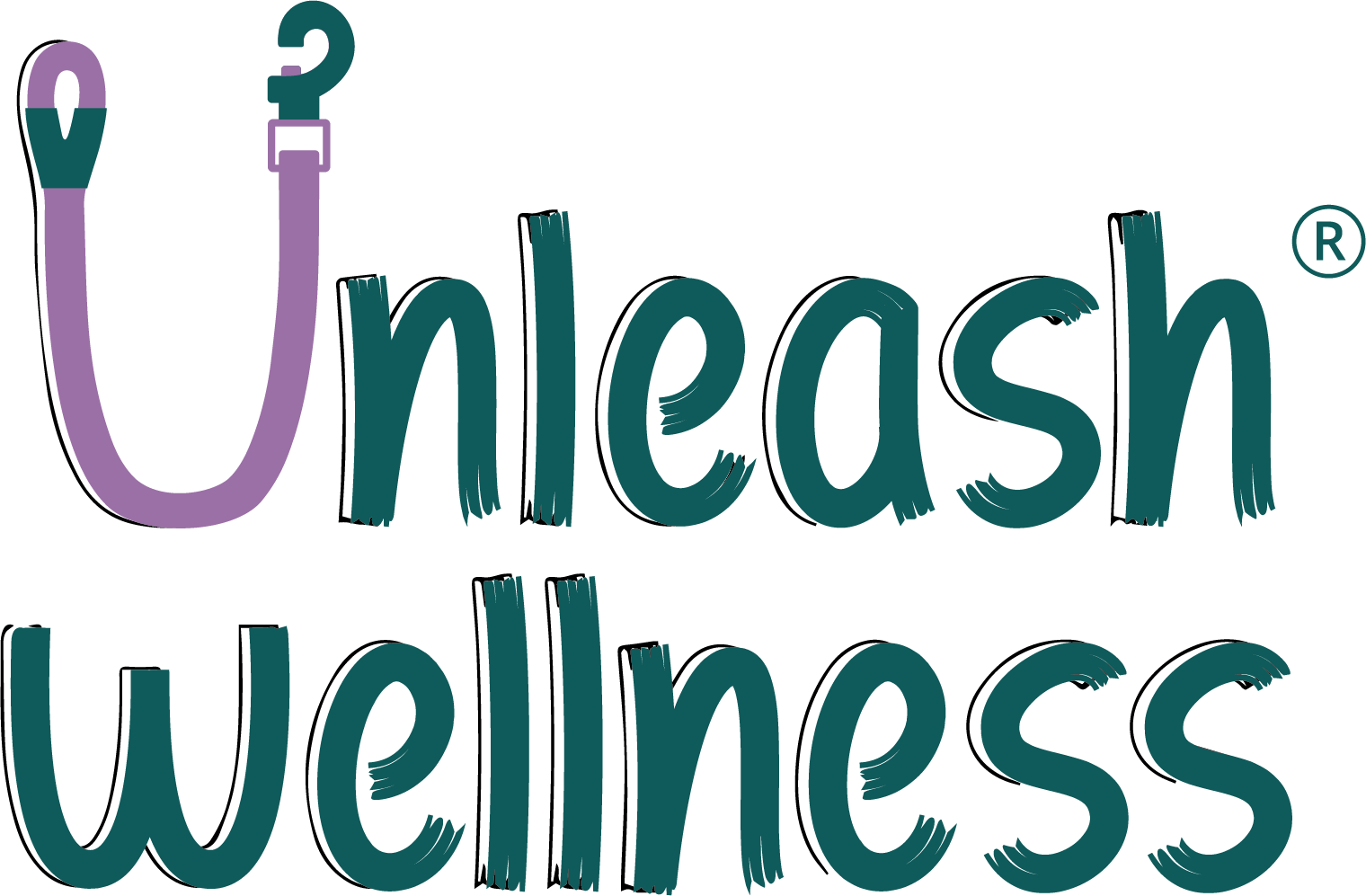Understanding body language with dogs has been my passion ever since I got Caesar, my golden retriever and the inspiration behind Unleash Wellness. Trust me, once you unlock the secrets of body language with dogs, it's like discovering a whole new way to bond with your furry friend!
The Learning Curve: My Journey with Dog Language
Let me tell you about my first lesson in body language with dogs at our local park. There was Caesar, tail wagging, and I thought, "Oh, he's happy to make new friends!" Little did I know, his stiff posture and high-held tail were actually saying, "Mom, I'm not so sure about this situation!" That day taught me that mastering body language with dogs isn't just about watching one signal – it's about reading the whole story their body is telling.
The Daily Conversations
Your dog communicates constantly through body language with dogs and humans alike. Just yesterday, Caesar was doing his best "guilty face" near the kitchen counter. That slight head turn, avoiding eye contact, with ears slightly back – classic signals in body language with dogs that say, "Yes, I did steal that chapati, and no, I'm not sorry!"
Universal Dog Speak
The fascinating thing about body language with dogs is how similar it is across breeds. Whether you have a tiny Pomeranian or a massive Great Dane, their basic dog language remains remarkably consistent. Though I must say, watching Caesar try to do the typical puppy play bow with his senior joints was what initially inspired us to create JOUNCE®.
Reading Stress Signals
Interpreting body language with dogs helps you spot stress signals before any obvious signs of discomfort. When Caesar started showing subtle stress signs during Diwali (licking lips, yawning excessively), it helped me understand exactly when to give him his NO-ANTSY® strips. Understanding these cues isn't just about knowing what they're saying – it's about responding appropriately to their needs.
The Tale of the Tail
In the world of body language with dogs, the tail is often called the emotional barometer, but it's not as simple as "wagging = happy." Caesar has what I call his "different wags for different bags." There's the excited helicopter tail when he sees his favorite treats, the low wagging when he's unsure about a situation, and the high, stiff wag that says, "I'm not so sure about this, Mom!"
Trust and Affection: The Language of Love
One of the most heartwarming aspects of body language with dogs is recognizing their signs of trust and affection. When Caesar flops over for a belly rub, exposing his tummy completely, that's not just an invitation for scratches – it's a profound display of trust. Though I suspect he's extra relaxed these days thanks to his daily VITAM PAWS® and JOLLY GUT® routine!
The Eyes Have It
Remember that time your dog gave you that deep, soft-eyed look? That's one of the most beautiful expressions in dog language – what we call "love eyes." Caesar gives me these looks especially during our morning routine when I'm mixing his supplements into his breakfast. (Yes, I'm pretty sure he loves me more than the supplements, but sometimes I wonder!)
When Something's Not Right
Being fluent in body language with dogs means recognizing when they're trying to tell us they're not feeling their best. When Caesar was younger and had occasional tummy troubles, his hunched posture and tight mouth were clear signals that his digestion needed support – which is actually what led us to develop JOLLY GUT® in the first place!
Building Your Communication Skills
The beauty of understanding body language with dogs is that it deepens your bond with your furry family member. It's like learning a new language, but instead of flashcards, you have a living, breathing, tail-wagging teacher right at home.
Want to start understanding your dog better? Start by simply watching them in different situations. Notice how their signals change when they're relaxed versus excited, nervous versus confident. Remember, every dog is unique in how they express themselves – getting to know your particular pup's communication style is part of the joy of being a pet parent!
Written by a pet parent who's learned that sometimes the best conversations happen without words, and who's still trying to decode the exact meaning of Caesar's "dinner time dance!"



